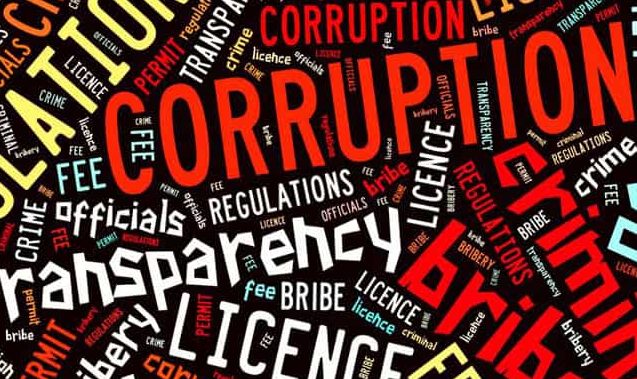
Muhammad Arif
A recent report in The News on 23 September 2025 exposed yet another episode of Pakistan’s bureaucratic farce masquerading as emergency engineering. The story of a 36-inch-diameter “temporary” gas pipeline of about 8 Kms length laid along the M-5 motorway near Jalalpur Pirwala—purportedly to restore gas supply after flood damage—reveals the scale of governance rot and creative corruption within Sui Northern Gas Pipelines Limited (SNGPL).
The country is reeling from one of the worst flood crises in recent history. Punjab’s energy infrastructure has been severely battered, and SNGPL’s transmission network near Jalalpur Pirwala was among the worst hit. When the main lines floated due to flooding, a truly professional response should have involved detailed engineering, safety audits, and regulatory coordination. Instead, in a race to impress visiting dignitaries, senior company officials ordered the laying of a 36-inch pipeline nearly seven kilometres long right in the middle of the motorway—at a location where the road itself had partially collapsed.
According to an internal whistle blower, every essential technical step was compromised: no proper welding per code, no radiography, no hydrostatic testing. Yet the project was declared a success before cameras—a monument to haste and hubris rather than engineering. Out of adversity, the creative minds within SNGPL have learned to make fortunes. Instead of crisis-driven prudence, the floods became a stage for another deceitful project designed not to restore gas supply but to showcase action and extract approvals. This multi million rupee misadventure, undertaken in the name of emergency response, has now been dismantled without ever being used.
This pattern is not new. After the Bannu West–Wali Field pipeline project, which reportedly consumed over PKR 25 billion in the installation of an old and depreciated pipeline, one might have expected lessons to be learned. Instead, SNGPL has continued to apply its “creativity” in fooling decision-makers, securing approvals for technically unsound schemes under the guise of innovation and urgency. The Manga Store scam, involving approximately Rs 460 million and now under investigation by the FIA, further exposes this culture of deception. The same mindset underlies the seven-kilometre high-pressure pipeline laid on the motorway—an opportunistic misuse of national crisis for self-promotion and to clinch top management positions, while misleading the Government into believing that restoration work was under control.
During the Petroleum Minister and Secretary’s site visit to Jalalpur Pirwala, they were reportedly fed selective briefings. What they saw was a staged demonstration, not a functioning system. Field engineers concede privately that this pipeline cannot be safely operated at the intended 800–900 psig pressure. The line was never meant to be operated—it was meant to be shown. The Projects Department, supported by a non-technical management tier, bypassed the Design and Operations departments altogether. The project defied logic, ignored warnings, and consumed over Rs 300 million of public money—later dismantled quietly when even its show value expired. This is not innovation; it is creative corruption—the art of wasting national resources with bureaucratic sophistication and media management.
The Jalalpur Pirwala episode lays bare a deeper malaise. Pakistan’s state-owned utilities are collapsing under the weight of their own internal politics and massive corruption. Appointments are made for loyalty rather than competence. The same officials rotate between projects and postings, learning little and leaving less. Technical staff with decades of experience are sidelined by ambitious generalists whose only skill is upward management. Internal checks such as Quality Assurance and Safety Compliance—the backbone of any engineering organization—are treated as ceremonial. Their dissenting notes vanish in files, their warnings conveniently ignored. Even the Managing Director’s office, instead of seeking independent verification, relies on selective briefings crafted to please the ministry.
A 36-inch high-pressure gas line operating near 900 psi is not an administrative matter—it is an engineering responsibility with life-and-death consequences. A rupture on a motorway alignment could wipe out infrastructure, vehicles, and lives within seconds. Yet all these risks were shrugged off in the name of “emergency restoration.” It must be asked: was the Design Department consulted? Were the Operations custodians—responsible for pipeline safety—taken into the loop? Did the MD understand the technical risks before granting approval? And if all these steps were skipped, who will bear responsibility for this reckless misuse of public funds?
The entire episode epitomises a national pathology—where ministries demand instant optics and state companies oblige with theatrical solutions. The tragedy is not only financial; it is moral. By deceiving the very institutions meant to ensure accountability, these actors make a mockery of governance itself. For them, performance means posing for drone footage beside an untested pipeline, not ensuring long-term system integrity. Such a culture of “performative engineering” is worse than negligence—it is deceit in uniform, dressed up as dedication.
This fiasco demands a forensic technical and financial audit independent of SNGPL’s hierarchy. A joint inquiry under OGRA and the Petroleum Division, aided by PEC-registered pipeline experts or neutral institutions such as NUST or DNV (an international risk-management and assurance body), should examine who conceived, approved, and supervised the motorway-centreline alignment; what engineering deviations were made and who authorised them; how public money was released and justified; and why laying of a non-operational pipeline which has been immediately dismantled for the same safety concerns, was presented as a success story.
In the end, the entire exercise amounted to nothing more than a counting of sea waves—a flurry of meaningless activity undertaken to impress rather than to deliver. It symbolizes a governance culture where motion replaces progress and slogans substitute for substance. Unless Pakistan’s public enterprises are re-anchored in merit, transparency, and technical autonomy, every crisis will birth another spectacle of creative corruption—and the cost, once again, will be unauentionably dumpped into consumer gas pricing shredder.
The author is: Former Member, OGRA, Mnaging Partner at Arif & Associates, a boutique petroleum and business law consultancy, is a thought leader in energy, governance, regulatory, economic policy reforms, and consumers advocate; [email protected] | 0333 5191381


